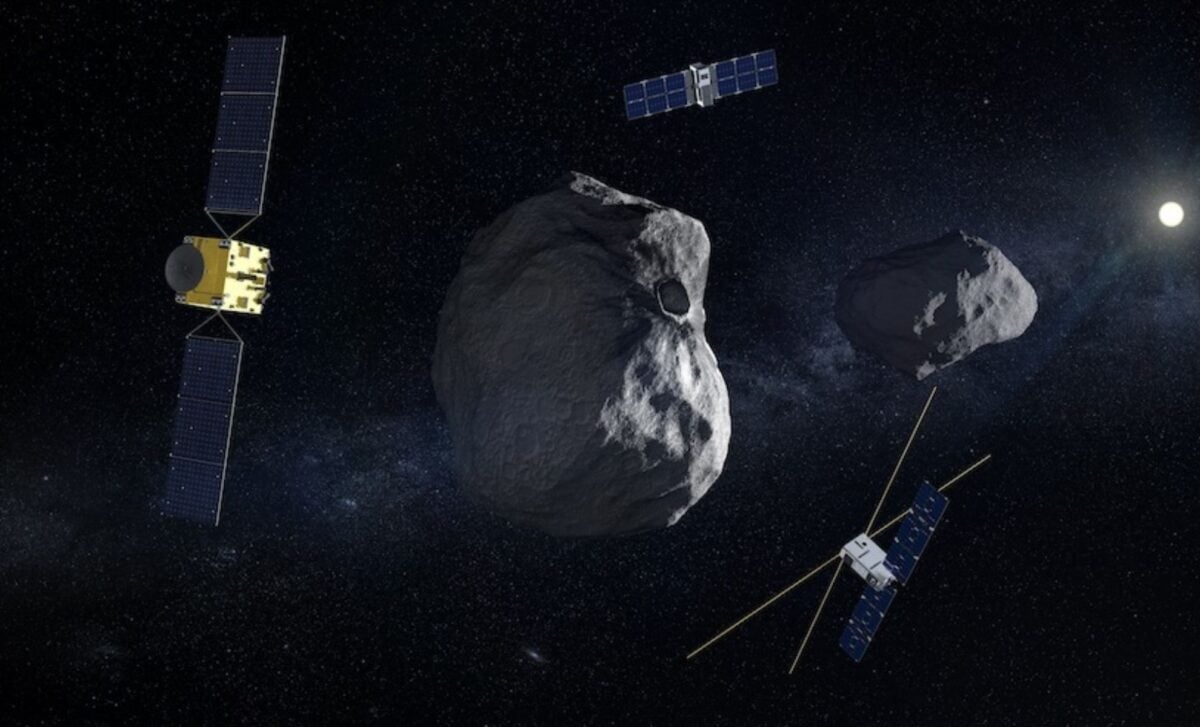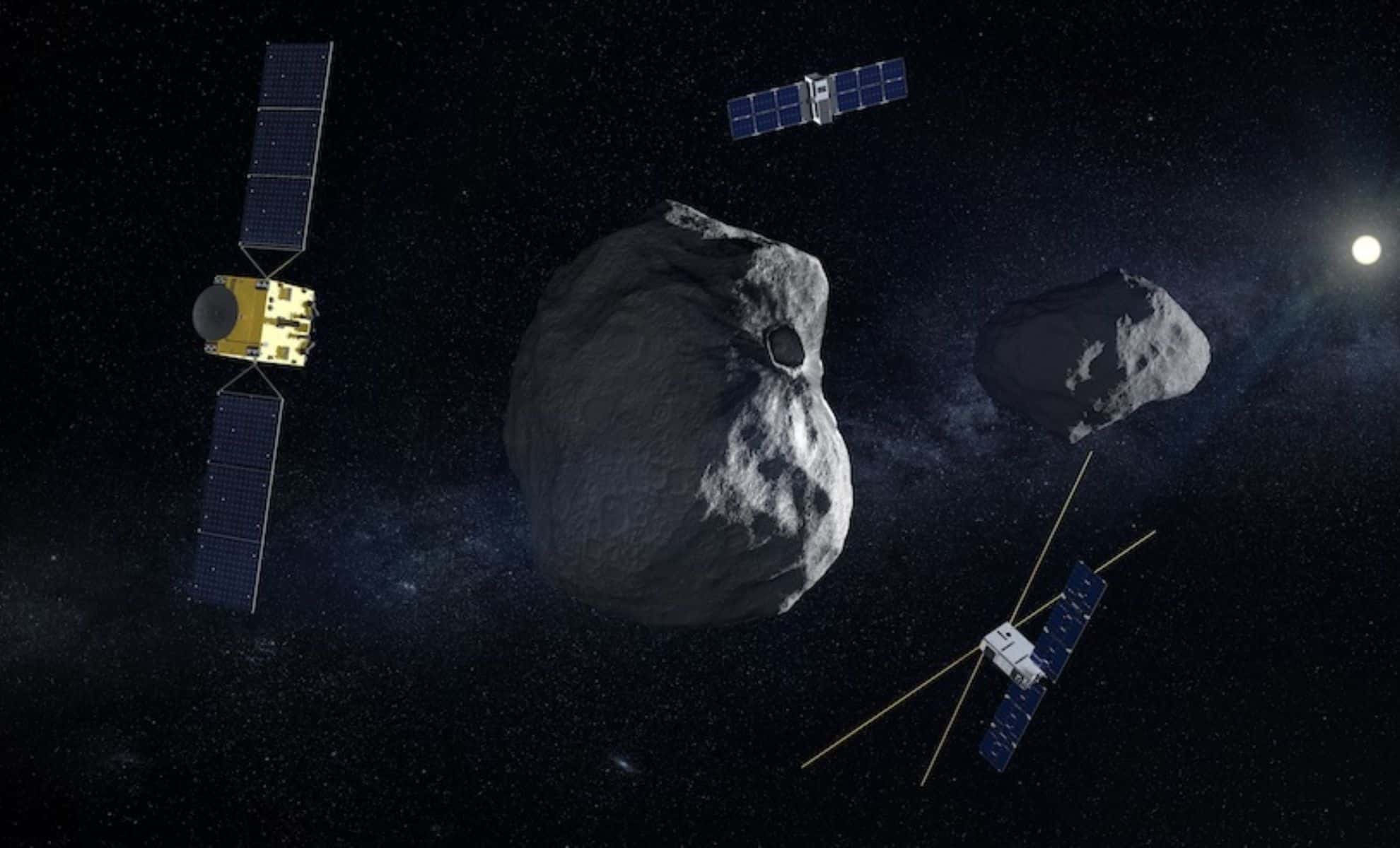ESA’s Hera mission, a vital follow-up to NASA’s DART impact test on the asteroid Dimorphos, is nearing its October 7 launch. Hera will study the aftermath of the DART collision, providing critical data on asteroid deflection as a planetary defense strategy. Despite recent delays due to a SpaceX Falcon 9 upper stage anomaly, ESA remains confident in the upcoming launch, with spacecraft preparations proceeding on schedule.
ESA’s Hera Mission Moves Forward Despite Recent Grounding of Falcon 9 Rocket

The European Space Agency's Hera mission, part of the planetary defense effort to study the aftermath of NASA’s DART impact on Dimorphos, is moving closer to its launch despite recent setbacks with the SpaceX Falcon 9 rocket. The Hera spacecraft is scheduled for launch on October 7, 2024, but this depends on the resolution of a technical issue with the Falcon 9’s upper stage, which was grounded after an anomaly during a recent mission.
Hera: A Mission Critical to Planetary Defense
The Hera mission is a crucial part of ongoing efforts to develop planetary defense strategies capable of protecting Earth from potential asteroid impacts. The mission follows NASA's successful Double Asteroid Redirection Test (DART), which collided with Dimorphos, the smaller moon of the asteroid Didymos, in 2022. DART was the first experiment in changing the trajectory of a celestial body using a kinetic impactor, a method that could one day be used to divert a potentially hazardous asteroid away from Earth.
Hera’s role is to provide detailed follow-up analysis of this unprecedented event. The spacecraft will arrive at the Didymos-Dimorphos system in late 2026, and over the course of a six-month mission, it will measure the size and shape of the crater created by DART’s impact. Hera’s instruments will also collect data on the amount of material ejected from the surface of Dimorphos and investigate the overall structural changes in the asteroid. This information will be critical in evaluating the effectiveness of kinetic impact as a planetary defense technique.
As Ian Carnelli, Hera’s project manager, emphasized, the primary goal is to understand “how efficient the impact was.” Hera will calculate how much momentum DART transferred to Dimorphos by measuring the asteroid’s mass and assessing how much its orbit changed. This will provide a clearer picture of the force required to alter the course of an asteroid in the event of an actual threat to Earth. According to Michael Kueppers, Hera’s project scientist, “We will learn a whole lot about how the impact process works,” and this knowledge will be invaluable if such techniques are ever needed in a real-world planetary defense scenario.
Preparing for Launch amid Challenges
Although Hera’s preparations continue to move forward, the mission has faced a significant complication due to the grounding of SpaceX’s Falcon 9 rocket, the vehicle scheduled to launch the spacecraft. The issue arose after an “off-nominal deorbit burn” during a mission in late September 2024, which caused the Falcon 9’s upper stage to reenter Earth’s atmosphere outside its designated zone in the South Pacific. Following this anomaly, SpaceX temporarily halted all Falcon 9 launches to investigate the cause, while the Federal Aviation Administration (FAA) required the company to submit a full report before allowing the rocket to resume flight operations.
Despite this delay, ESA officials remain confident that Hera’s launch schedule can still be met. Carnelli has been in close contact with SpaceX and reported that the investigation into the Falcon 9 issue is progressing well. “We are very happy with the progress they are showing to us, which proves their commitment to launch us,” Carnelli said. The Hera spacecraft was encapsulated in its payload fairing on October 3, as planned, and the mission remains on track for an October 7 launch, pending final approval from the FAA.
ESA is also prepared to make Hera the first mission to fly aboard Falcon 9 after the rocket’s grounding is lifted. Carnelli noted that ESA would be willing to proceed with Hera as Falcon 9’s return-to-flight mission, even though it is common for SpaceX to resume launches with less complex missions, such as those carrying Starlink satellites. The launch window for Hera extends until October 27, allowing some flexibility if additional delays are necessary. However, NASA’s Europa Clipper mission, scheduled to launch on October 10 aboard a Falcon Heavy, will also need to be factored into the timing, as the agencies have agreed to a 48-hour standdown between the two missions.
CubeSats and Scientific Payloads
In addition to the main spacecraft, the Hera mission will deploy two small CubeSats, named Juventas and Milani, which will play important roles in enhancing the scientific return of the mission. CubeSats are miniature satellites, typically measuring just a few centimeters in each dimension, and they are increasingly used in deep space exploration due to their low cost and versatility. Juventas and Milani represent ESA’s first deep-space CubeSat missions, and both will conduct close-up studies of the Didymos-Dimorphos system.
Juventas is tasked with geophysical investigations of Dimorphos, focusing on understanding the moon’s internal structure and composition. This data will be crucial for interpreting how the DART impact affected the asteroid and how such small bodies in space respond to kinetic energy. Milani, on the other hand, will focus on dust detection and visual inspection, providing high-resolution images of the surface of Didymos and Dimorphos. Milani will also monitor the debris cloud left behind by DART’s impact, assessing the spread and density of the particles ejected from the asteroid.
One of the significant challenges for the Hera mission was the development of European-built components for the CubeSats. ESA’s procurement policies require the use of European-made technology, which meant that new systems had to be developed for deep-space communications and propulsion. As Carnelli explained, “We had to develop European radio, deep space radios. We had to develop specific propulsion systems in Europe.” These new technologies will ensure that Juventas and Milani are capable of carrying out their complex tasks while maintaining communication with Earth over vast distances.
A Critical Step in Planetary Defense
With a total mission cost of 363 million euros (approximately $401 million), Hera represents a significant investment in the future of planetary defense and the broader scientific community. The data it collects will not only advance our understanding of asteroid dynamics but also provide valuable insights into how we might protect Earth from future asteroid threats. The success of the Hera mission could lead to the development of more sophisticated planetary defense systems in the coming decades.
Hera’s findings will complement those from NASA’s DART mission, offering a more complete picture of the Didymos-Dimorphos system and how kinetic impactors can be used to deflect potentially hazardous asteroids. By closely analyzing the crater left by DART and measuring the changes in Dimorphos’ orbit, Hera will help scientists refine models of asteroid behavior and determine the best methods for future asteroid deflection missions.
As ESA continues its collaboration with NASA and other international partners, Hera is set to play a key role in shaping humanity’s response to one of the most fundamental threats from space. Carnelli reflected on the project’s achievements, saying, “It really was an amazing project and I can only be extremely proud of what we have achieved together.” With the Hera mission poised for launch, ESA is taking a major step forward in planetary defense, ensuring that the tools are in place to protect our planet from asteroid impacts in the future.



